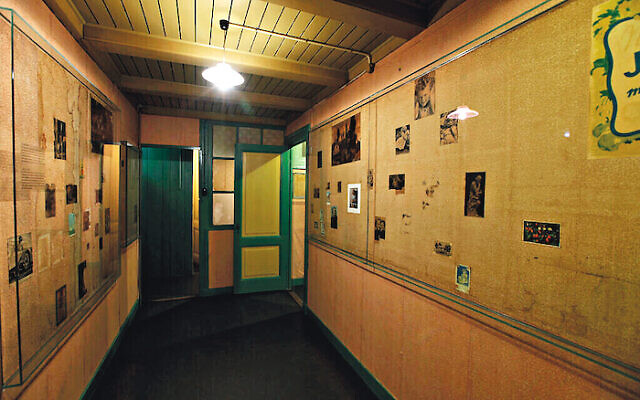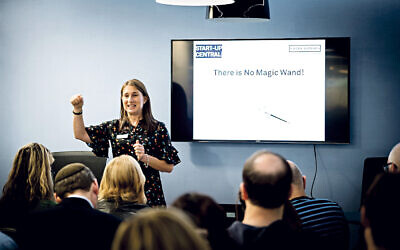Amsterdam gets to know Anne Frank
In the tourist-free city, locals are finally seeing the Anne Frank House under Covid-19 restrictions

Under normal circumstances, the queue to enter the Anne Frank House stretches far along this capital city’s Prinsengracht canal, writes Cnaan Liphshiz. Tourists who had booked their visit at least two months in advance — the only way to guarantee entry — line up at assigned time slots to see the former hiding place of the world’s most famous Holocaust victim.
They wait for 15 minutes and, barring delays, enter in one large group the cramped space where Anne wrote the diaries that would become the memoir The Diary of a Young Girl.
Now, with tourism shut down across Europe because of the pandemic, the square in front of the Netherlands museum is empty and the building looks deserted. It’s not.
Each week, the museum’s staff greet thousands of locals who had been put off by the wait times and queues but are now seizing the opportunity to visit the attraction in their own backyard. Many are entering the site for the first time.
“I’ve lived here all my life and I’ve walked past the Anne Frank House countless times, but I was just always put off by that long line of tourists,” one visitor, 62-year-old Stella Ruisch, said after she and her daughter visited on 12 June, what would have been Anne’s 91st birthday.
Before the pandemic, the Anne Frank House was the third most-visited museum in the Netherlands, with about 3,500 visitors daily. About 10 percent were local, Dutch media have said. Now 1,000 people visit daily, and they’re almost all locals.
The museum was closed from March until June, when it reopened with a reduced capacity due to social distancing measures. The small building housing the museum now accommodates 35 people at a time, compared with 80 before the pandemic. That means visitors can find themselves alone for minutes at a time in one of the rooms that are decorated to resemble how they looked when the Franks and other Jews in hiding stayed there from 1942 to 1944.
Anne Frank’s story is taught in most Dutch schools, so locals are likely to know more about her story than many of those from China, Japan, Brazil and the United States, who account for many visitors.
The absence of tourists is, however, a serious blow to the museum budget. The institution gets no government subsidies, relying on admission fees and donations for its overhead and educational activities in more than 40 countries.
Currently, “ticket revenues will not be sufficient to cover the operational costs by a long shot”, Garance Reus-Deelder, the museum’s former managing director, wrote last month.
The coronavirus forced the Anne Frank Museum, which opened in 1960, to close at the start of an important year: the 75th anniversary of the liberation of Europe from Nazism.
The anniversary, which government institutions and many museums in the Netherlands are observing, is also generating interest from locals in the Anne Frank House, according to Rembrandt Frerichs, a musician from The Hague and father of two. His 11-year-old son watched a video diary released by the Anne Frank House during the lockdown that simulates how Anne would have documented her time at the secrete annex had she lived in the digital era.
“We figured it was time to visit the Anne Frank House as a family, and now that the tourists are gone, we’re definitely going to do it,” Frerichs said.

Some viewers of the vlog commented that their experience of being confined to their homes offered a glimpse of the reality that Anne and the others inhabited. Frerichs, anon-Jew who visited the Anne Frank House many years ago,disagreed. “There’s just no basis for comparing our situation with theirs,” he said.
Still, the jazz musician found himself thinking of the Franks in assessing his way of dealing with this spring’s wrenching changes.
“I’m an optimist,” Frerichs said. “I keep telling myself that things are about to get better, even when rationally I’m not sure they ever will. I just wonder if they had similar thoughts in that little secret annexe.”

Thank you for helping to make Jewish News the leading source of news and opinion for the UK Jewish community. Today we're asking for your invaluable help to continue putting our community first in everything we do.
For as little as £5 a month you can help sustain the vital work we do in celebrating and standing up for Jewish life in Britain.
Jewish News holds our community together and keeps us connected. Like a synagogue, it’s where people turn to feel part of something bigger. It also proudly shows the rest of Britain the vibrancy and rich culture of modern Jewish life.
You can make a quick and easy one-off or monthly contribution of £5, £10, £20 or any other sum you’re comfortable with.
100% of your donation will help us continue celebrating our community, in all its dynamic diversity...
Engaging
Being a community platform means so much more than producing a newspaper and website. One of our proudest roles is media partnering with our invaluable charities to amplify the outstanding work they do to help us all.
Celebrating
There’s no shortage of oys in the world but Jewish News takes every opportunity to celebrate the joys too, through projects like Night of Heroes, 40 Under 40 and other compelling countdowns that make the community kvell with pride.
Pioneering
In the first collaboration between media outlets from different faiths, Jewish News worked with British Muslim TV and Church Times to produce a list of young activists leading the way on interfaith understanding.
Campaigning
Royal Mail issued a stamp honouring Holocaust hero Sir Nicholas Winton after a Jewish News campaign attracted more than 100,000 backers. Jewish Newsalso produces special editions of the paper highlighting pressing issues including mental health and Holocaust remembrance.
Easy access
In an age when news is readily accessible, Jewish News provides high-quality content free online and offline, removing any financial barriers to connecting people.
Voice of our community to wider society
The Jewish News team regularly appears on TV, radio and on the pages of the national press to comment on stories about the Jewish community. Easy access to the paper on the streets of London also means Jewish News provides an invaluable window into the community for the country at large.
We hope you agree all this is worth preserving.





















